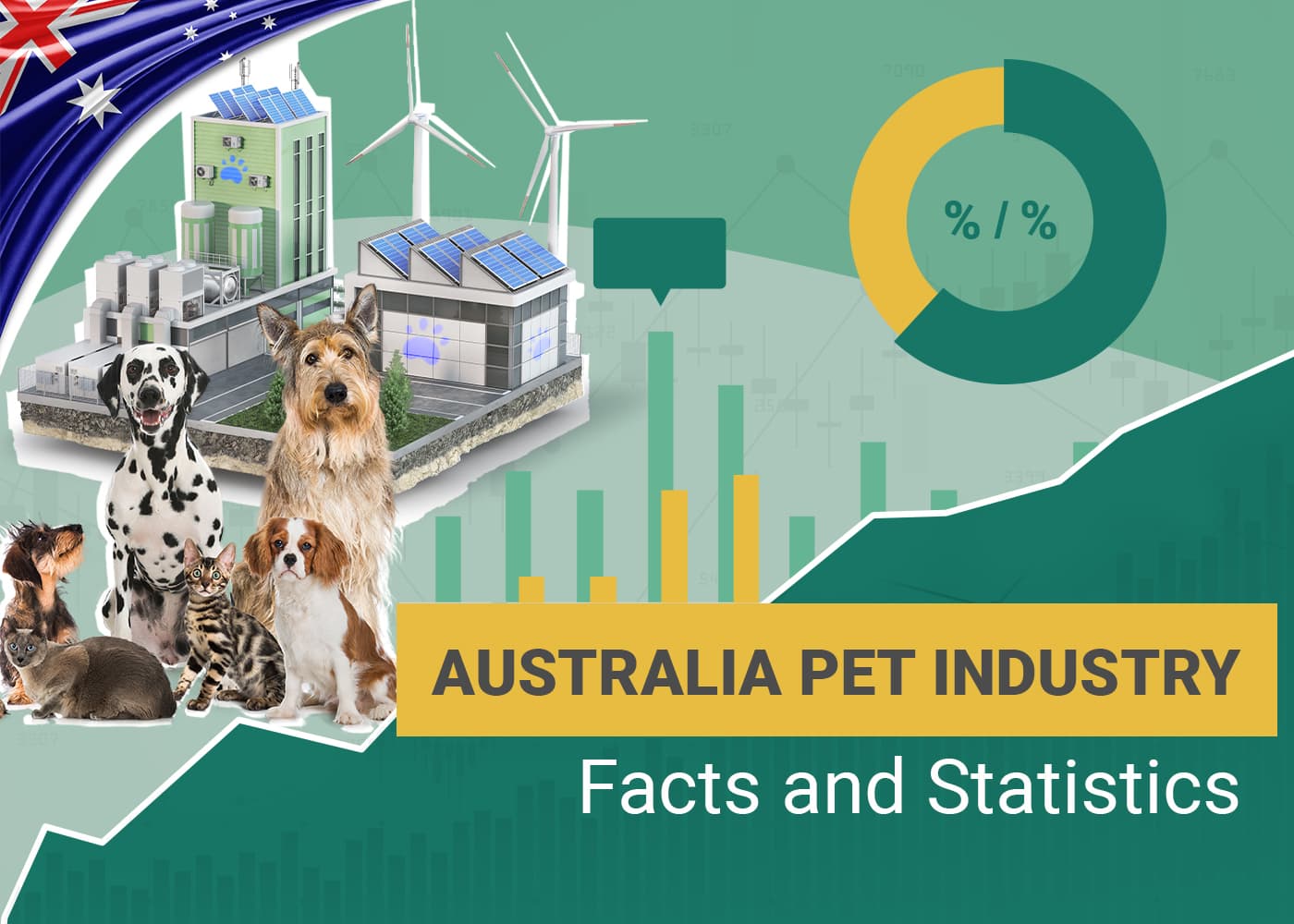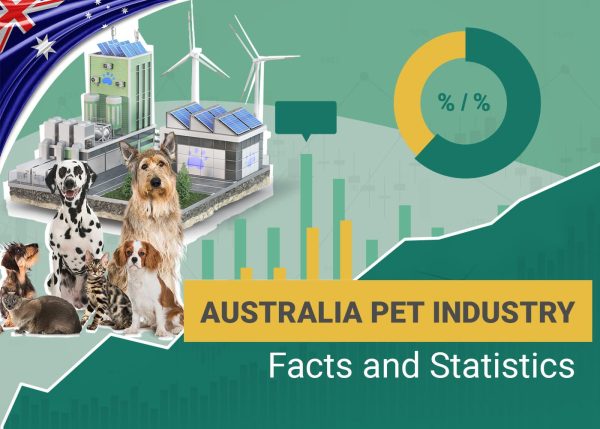Note: This article’s statistics come from third-party sources and do not represent the opinions of this website.
Although many residents of Australia have been affected by drought, wildfires, and a lingering global pandemic, they continue to care for and love their pets. Animal breeders and rescue organizations struggled to connect to customers during lockdowns and restrictions, but pet lovers in the country managed to adapt to the unfavorable conditions and help needy dogs and cats find homes.
When you study the country’s statistics regarding the pet industry, you realize that Australians are avid fans of animals and regard their pets as family. Whether you’re looking for an answer to “How much is the pet industry worth?” or you’re curious about pet grooming statistics, you can find out with this detailed analysis of the pet market in Australia.
Top 12 Australian Pet Statistics
- The pet industry in Australia was worth $13 billion in 2021.
- Australia has over 29 million pets.
- 61% of Australian households have pets.
- Australia has one of the highest pet ownership rates in the world.
- The market size of the pet industry in Australia is $3.2 billion.
- Cats entered rescue organizations from 2020 to 2021 at twice the rate of dogs.
- Queensland had the highest number of adoptions (14,599) in 2020.
- From 2020 to 2021, Australian shelters housed 64.9% cats, 30.8% dogs, and 4.3% other pets.
- Australia employs 4,000 pet groomers.
- 13,465 veterinarians work in Australia.
- Dog walkers in Australia make AU$24.57 per hour.
- 16% of Australian pet owners have pet insurance.
Pet Spending Statistics in Australia
1. The pet industry in Australia is worth $13 billion in 2021.
(9News)
In 2019, the industry was worth $12.2 billion, and some analysts believed the numbers in 2021 would be dismal because of the pandemic. However, the opposite occurred, and Australians increased their spending on pets and pet products. Although private pet stores suffered losses during lockdowns, some online suppliers profited from having a large population confined to their homes. Subscription services and pet product suppliers became invaluable to pet owners from 2019 to 2021, and it’s unlikely that online ordering will decrease when conditions have improved.

2. Australia has over 29 million pets.
(RSPCA)
Like the pet owners in the United States and the United Kingdom, Australians prefer owning dogs over cats. According to the RSPCA, 64% of Australian pet owners are women and the highest percentage (70%) of pet ownership according to age group is Generation Z (ages 18 to 24). Generation Xers made up the second largest group of pet parents followed by Baby Boomers. Dog owners spent more on their beloved pets than cat owners or bird lovers. In Australia, the average amount spent on dogs was AU$1,627.00 compared to only AU$962.00 spent on cats.
3. 61% of Australian households have pets.
(RSPCA)
Australia is not as densely populated as most of its allies, but Australians clearly adore their furry friends. Over ¾ of Australian families with children ages 6 and up have pets in their homes but when the RSPCA surveyed pet owners and asked them if they considered their pets as family, over 65% of respondents answered “Yes”. The most common reasons for owning pets included love, companionship, and the ability of animals to improve human mental health.

4. Australia has one of the highest pet ownership rates in the world.
(RSPCA)
Although Australia ranks far behind the United States and China in dog and cat populations, the country has the 4th largest population of fish and birds in the world. Although feral dogs and cats can cause issues with disease transmission and property damage, Australians prefer keeping their animals indoors. 76% of cat owners and 92% of dog owners keep their pets indoors.
5. The market size of the pet industry in Australia is $3.2 billion.
(IBIS World)
Between 2012 and 2021, the market size of Australia’s pet industry has grown on average 4.3% every year. However, the increase in market size from 2020 to 2021 is predicted to be 11.6%. The pet industry performed much better than other sectors of the Australian economy. Its market size increased faster than the overall economy and outperformed the Consumer Goods and Services sector. The industry’s growth is a clear indication that Australians love of their pets and are willing to endure substantial costs to keep them healthy.

Australian Pet Industry Trends
6. Cats entered rescue organization from 2020 to 2021 at twice the rate of dogs.
(Petrescu)
Most of the pets housed by rescue organizations were wild cats from urban areas. Although feral felines must depend on trash scraps and small prey to survive, they’re less vulnerable to predators in metropolitan areas.
7. Queensland had the highest number of adoptions (14,599) in 2020.
(PetRescue)
Sydney is in New South Wales and is the most populated city, but NSW did not have as many adoptions in the region QLD with the country’s third highest population.
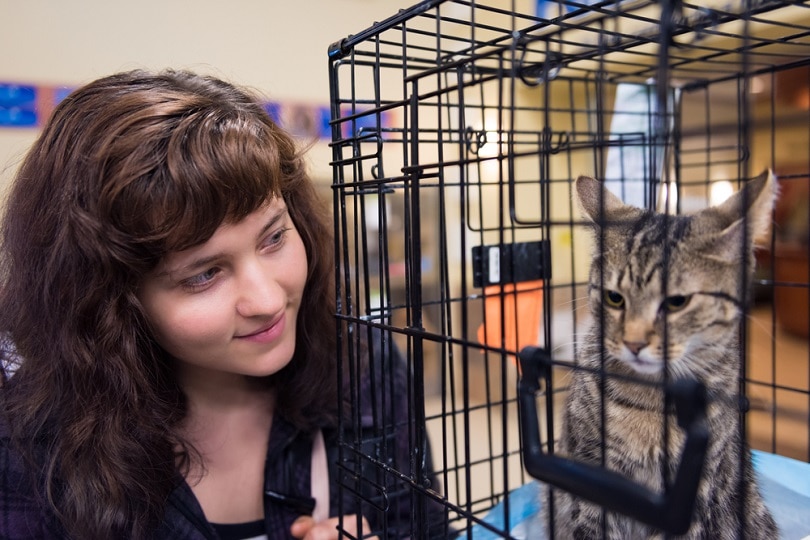
8. From 2020 to 2021, Australian shelters housed 64.9% cats, 30.8% dogs, and 4.3% other pets.
(PetRescue)
Dogs and cats are more abundant in rescue shelters than other animals. But some pet lovers may be unaware that shelters and animal rights organizations help find homes for several types of domesticated animals, including ferrets, rabbits, and rodents. They even help home horses, ducks, chickens, pigs, goats, and sheep.
Pet Services Statistics
9. Australia employs 4,000 pet groomers.
(PetsAustralia)
This number may seem high, but pet groomers are in great demand in Australia. The most requested positions are for experienced groomers with knowledge of treating multiple species of dogs, cats, and small animals. Like many of the world’s pet owners, Australians spend less on grooming than food or veterinarian services. However, grooming is an essential industry that keeps pets healthy and beautiful.

10. 13,465 veterinarians work in Australia.
(IBIS World)
The demand for veterinarian services rose from 2019 to 2021, but the devastating drought has minimized the demand for vets working with livestock. Dry conditions have caused significant cost increases for managing herds of farm animals and some farmers have had to decrease their herd size to offset the high prices. Because of this, fewer vets are finding work on ranches and farms. Australia has seven veterinary schools and around 4,150 vet clinics across the country.
11. Dog walkers in Australia make AU$24.57 per hour.
(PayScale)
Most dog walkers are part time operators who already have full-time jobs. But with the high hourly wage, this allows some dog walkers to make it a career. If you consider pet-sitting statistics from Australia, you’ll see that dog walkers make slightly less than pet sitters. According to Indeed.com, Australian pet sitters make AU$25.57 an hour. In addition to the financial benefits, dog walking keeps you fit with daily exercise.

12. 16% of Australian pet owners have pet insurance.
(ABC.net.au)
Vet bills seem comparable to some medical costs for humans, but several pet owners are not convinced that pet insurance is a reasonable expense. Younger pet owners are more likely to purchase pet insurance but those that buy policies have higher salaries. Pet insurance premiums vary between companies, but the costs are too high for average consumers. Most insurance companies will not insure a pet with a pre-existing condition and customers who use insurance to help pay for expensive procedures are unlikely to be able to switch to another company.
Frequently Asked Questions About Australia Pet Statistics
The pet industry in Australia yields some fascinating statistics, but you may have a few more questions that were not addressed in the article.
How much did the Australian pet food business make in 2020?
(ABC.net.AU)
The country’s pet food industry made $2.8 billion in 2020. According to the Pet Industry Association of Australia, the boom in pet food sales is evidence that pet owners are more willing than previous generations to provide premium food for their pets.
High-quality food can cost over twice as much as the standard kibble or canned wet food, but most pet parents believe that the high cost improves their pet’s health and allows them to live longer lives. Because pet food sales increased during the pandemic lockdowns, some analysts suggest that the industry may be more “virus-proof” than other markets that experienced substantial losses.
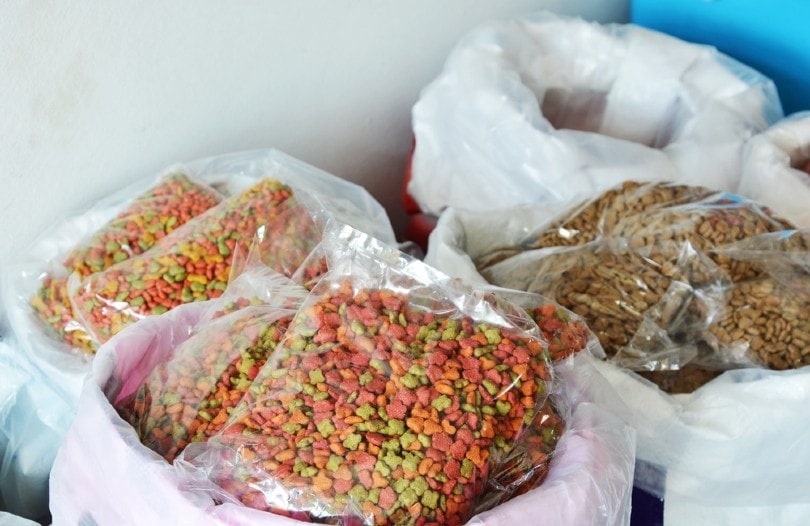
Which pet products are purchased the most by Australian pet owners?
(Animal Medicines Australia)
Pet food is the top expense of Australian pet parents, followed by health-related products for pets. Only one in five pet owners take their pets for yearly veterinary examinations. Some claim that the high costs of visits and availability of reliable online sources for animal health keep them from making regular appointments.
Have Australian farmers benefited from the pet food industry boom?
(mla.com.au)
In the 20th century, most pet owners in Australia and other developed countries relied on dry kibble and wet food from the top pet food manufacturers, but today’s consumers have more options. Demand has risen for human-grade ingredients and non-GMO meat and vegetables, and Australian farmers have benefited from the expansion of the premium pet food market.
The raw and fresh food companies make up a small percentage of the pet food revenues in Australia, but analysts predict the niche market’s growth will increase the demand for high-quality red meat products.
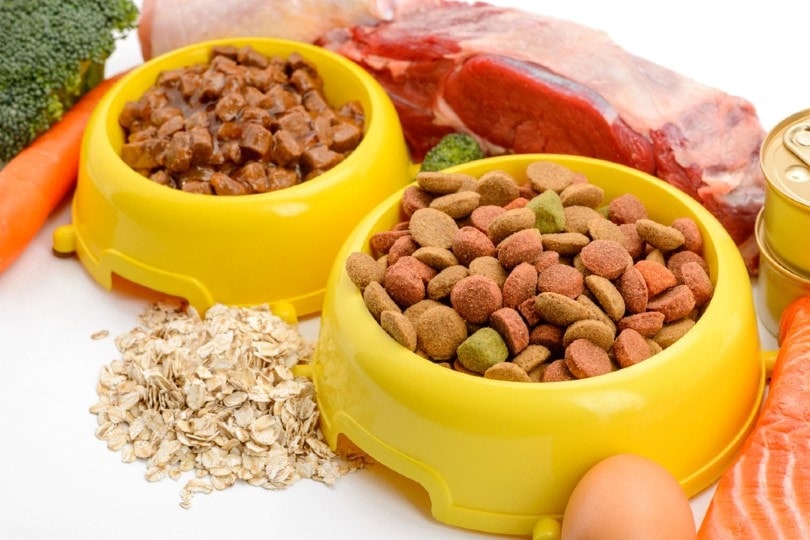
Conclusion
Pet food markets continue to grow in Australia, Great Britain, France, and the United States. Australian consumers are increasingly drawn to premium food, supplies, and services for their pets. They have one of the highest rates of pet ownership in the world, and most pet parents consider their pets as members of the family.
As the pet industry expands in the country, Australian pet owners are likely to see several companies enter the pet food, animal supplies, and vet services sectors every year.
Featured Image Credit: BearFotos, Shutterstock
Contents
- Top 12 Australian Pet Statistics
- Pet Spending Statistics in Australia
- 1. The pet industry in Australia is worth $13 billion in 2021.
- 2. Australia has over 29 million pets.
- 3. 61% of Australian households have pets.
- 4. Australia has one of the highest pet ownership rates in the world.
- 5. The market size of the pet industry in Australia is $3.2 billion.
- Australian Pet Industry Trends
- 6. Cats entered rescue organization from 2020 to 2021 at twice the rate of dogs.
- 7. Queensland had the highest number of adoptions (14,599) in 2020.
- 8. From 2020 to 2021, Australian shelters housed 64.9% cats, 30.8% dogs, and 4.3% other pets.
- Pet Services Statistics
- 9. Australia employs 4,000 pet groomers.
- 10. 13,465 veterinarians work in Australia.
- 11. Dog walkers in Australia make AU$24.57 per hour.
- 12. 16% of Australian pet owners have pet insurance.
- Frequently Asked Questions About Australia Pet Statistics
- How much did the Australian pet food business make in 2020?
- Which pet products are purchased the most by Australian pet owners?
- Have Australian farmers benefited from the pet food industry boom?
- Conclusion

